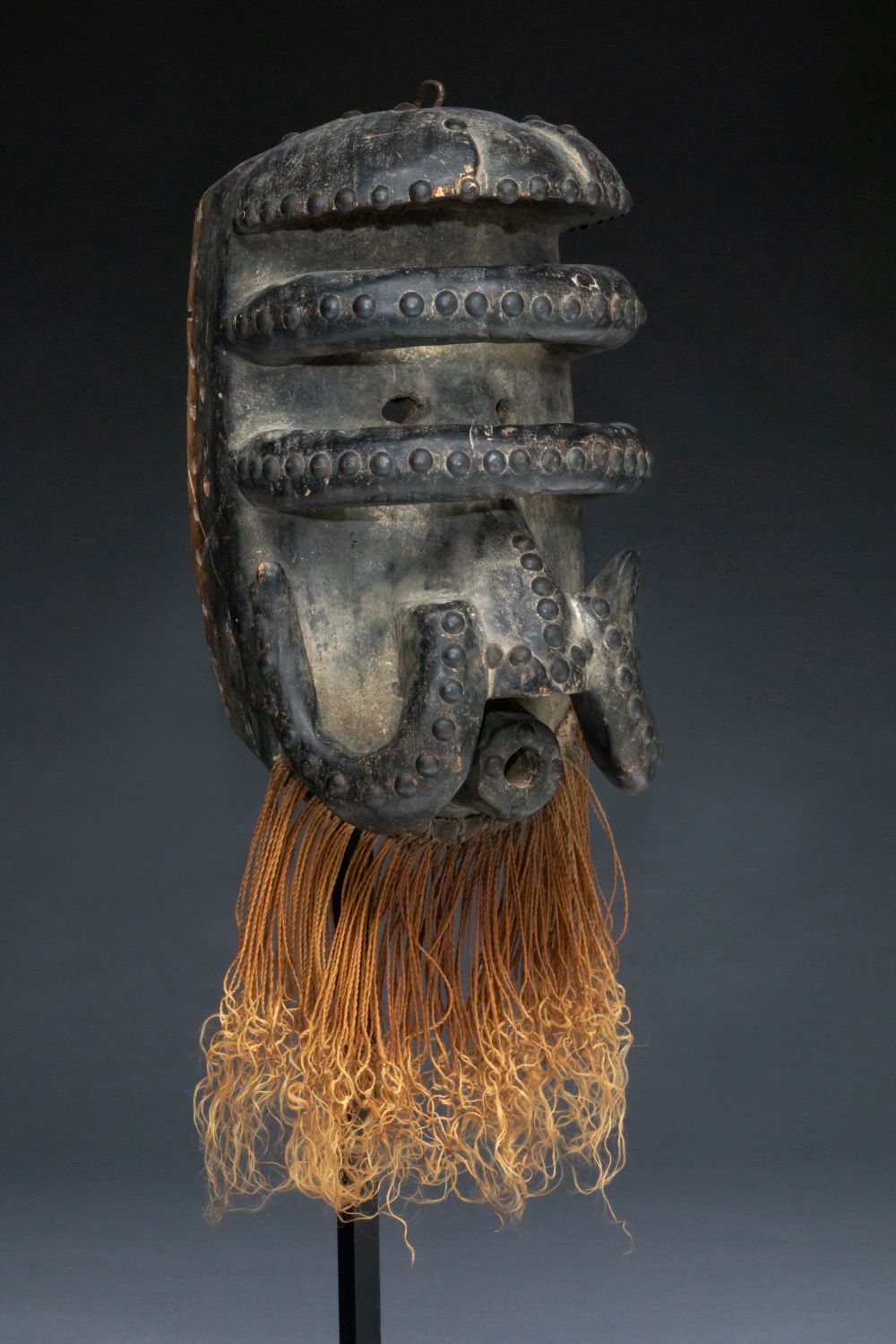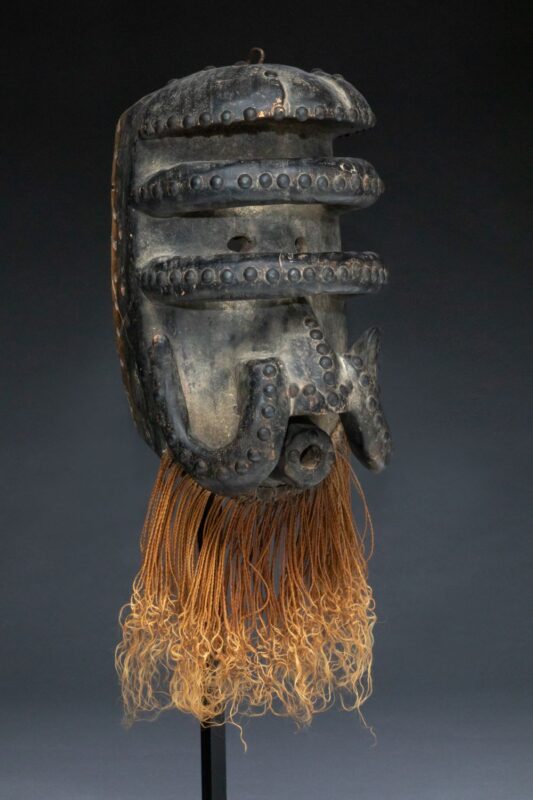Object Title: Bete Mask
Materials: Wood, raffia
Country: Democratic Republic of Congo
Culture: Bete
Date Created: 20th Century
The Bete people live in Ivory Coast and carve in several styles primarily that reflect their closest neighbors. The Southwestern Bete border the Kran who are also a Kru-speaking people living on either side of the Liberian border, and and from them they have adopted the use of masks of aggressive and terrifying nature spirits.
The masks of the Bete known generically as Gre (which most closely translates to “spirit”) differ from their Kran neighbors however in their adoption of unusual rounded forms that come up from the mask surface and their use of metal hobnails to adorn the otherwise polished surfaces. Perhaps a better name for these masks is the term “Nyabwa” (“Nyaswa” in Kran) that roughly translates to “fearsome” or “terrifying”.
In times past masks of this type, which depicted powerful spirits of the bush, would have appeared at important communal events such as harvests and funerals. A specific function related to warfare seems to have ceased long ago, where masked spirits would either encourage the warriors or fete them upon return from a campaign. Though this is not unique to the Bete it captured the imagination of early collectors and these masks were often called “War masks” in early publications.
In use, the mask would have been covered with strips of fur from the civet cat or genet – both of whose pelts resemble the leopard. The costume would have been a mass of fiber and fur and the dancer would have appeared large and imposing to the frightened community.
Exhibition History:
In Memoriam – Bonnie Terrill Ross (1956-2022). New York: QCC Art Gallery of CUNY, October 12, 2023, to February 16, 2024.


